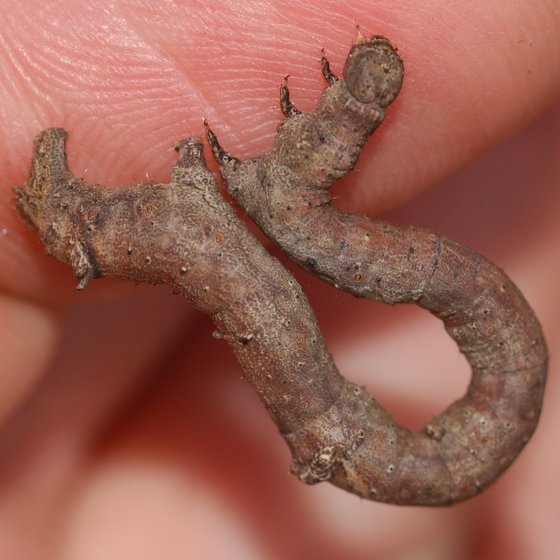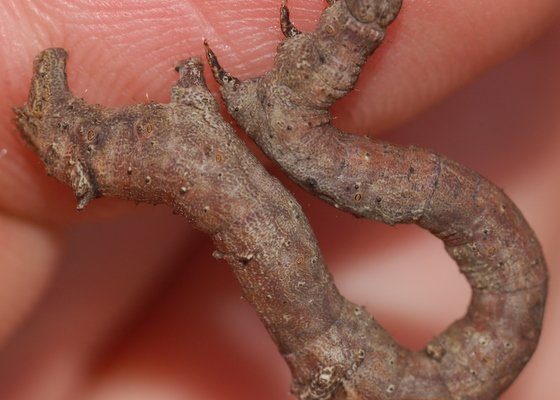
Inchworms, which belong to the caterpillar stage of certain moth species, are known for their distinctive looping movement. Imagine a tiny gymnast, performing a slow, graceful routine. That’s how inchworms move! They’re fascinating little critters that can make anyone stop and marvel at their quirky style. So let’s dive into the world of inchworms and discover where they call home around the globe.
What Are Inchworms?
Inchworms are the larval forms of moths from the Geometridae family, which is quite a mouthful! These caterpillars have a “measuring” method of locomotion that gives them their common name. When they move, they pull their hind bodies up, then extend their front end forward, creating that iconic “inching” look. This unique way of moving helps them avoid predators, as their subtle movements can blend into their surroundings.
There are many different species of inchworms, and they can vary significantly in color and size. Some are green to camouflage with leaves, while others may be brown or even brightly colored. You might find them in gardens, forests, and fields. Despite their small size, they play an important role in the ecosystem, serving as a food source for birds and other animals.
Where Do Inchworms Live?
Inchworms are mostly found in temperate regions, particularly where there are plenty of host plants like trees and shrubs. They thrive in areas with annual vegetation and are often spotted munching on the leaves of their favorite plants. Typically, you’ll find them in:
- Deciduous forests
- Woodlands
- Meadows
- Gardens
While they love these lush environments, it’s essential to recognize that they might not be found in extreme climates. For example, inchworms are quite rare in desert regions or places with severe Arctic temperatures. Their habitat directly influences their distribution and population.
Are Inchworms Present on Every Continent?
Here’s the crux: inchworms are not found on every continent. They primarily inhabit areas in North America, Europe, Asia, and parts of Africa and Australia. They are notably absent from cold and harsh environments, such as Antarctica, where extreme cold and lack of vegetation preclude their survival.
In fact, the unique biodiversity of each continent plays a significant role in whether inchworms call it home. While many species have adapted well to their environments, certain continents like South America and Antarctica do not provide the necessary ecosystems that inchworms require.
The Role of Climate in Inchworm Distribution
Climate has a huge impact on where inchworms can thrive. In areas with temperate climates, where seasons change and host plants are abundant, inchworms flourish. Warmer climates can allow for multiple generations within a year, providing a feast for local wildlife.
However, in very cold climates, such as those found in near-polar regions, inchworms face challenges. They lack the natural adaptations needed to survive the extreme cold or the prolonged winters. In contrast, warmer regions may experience higher populations of inchworms due to the extended growing season and larger variety of host plants.
Inchworms and Their Ecosystem
These little caterpillars play an essential role in their ecosystems. As herbivores, they primarily feed on leaves, helping to shape plant communities by controlling the growth of certain plant species. This grazing is necessary for the growth and health of trees and shrubs.
On the flip side, inchworms are also a significant food source for many animals. Birds, small mammals, and other insects rely on these soft-bodied caterpillars for nutrition. Their presence or absence can indicate the overall health of their environment, making them a crucial component of the food web.
How to Spot Inchworms in the Wild
If you’re on a mission to find inchworms, there are a few tips and tricks you can use. Start by checking under leaves or along tree branches during warm months, especially in places where trees like oaks and maples are plentiful. Look for their unique movement, as they can be quite stealthy.
You might also spot them hanging out in webs or near the ground, blending seamlessly into their surroundings. Just remember that patience is key when hunting for these little guys. They can be tricky to see, but worth the effort!
In conclusion, inchworms are indeed fascinating creatures that add a unique charm to the world around us. While they’re not found on every continent, their presence in various temperate regions showcases their resilience and adaptability. Understanding where they thrive helps us appreciate the delicate balance of our ecosystems and the roles different species play.
So the next time you’re out enjoying nature, keep an eye out for these lively little inchworms. Who knows? You might just spot one inching its way along a branch, adding a touch of whimsy to your day!

